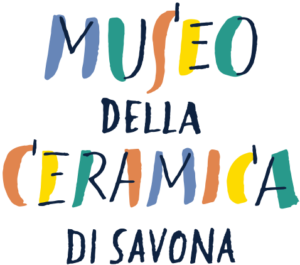With the participation of Dominique Zimmermann (entomologist, curator at the Natural History Museum, Vienna), Simonetta Fadda (artist), Jorge Hernandez (ceramicist), Enrico Perrucci (WASP) and the Goethe Institut Genua. Artistic direction: Tiziana Casapietra
Presentation
The multidisciplinary project “Networks in ceramic: from potter wasps to 3D printing” which combines entomology, contemporary art, traditional ceramic work as well as scientific and technological research, will be presented on Tuesday 9 April 2019.
In the morning, a preview of the project will be shown to students at schools. The official presentation to the public will be held at the De Mari Conference Room in Palazzo Gavotti at 17.00.
Everyone involved will be present to explain their contribution to the project: artists, ceramicists, entomologists and IT specialists. This will be followed by a guided tour of the installation in the Museum exhibition rooms to promote the wasps’ work, as well as to the space which houses the 3D printer.
On this occasion we will also present the Ceramic Museum’s new laboratory to the public, which unites traditional clay work with the experimental, linked to the use of digital technology.
Free entry.
The project
This project began with the observation of two particular types of wasp: the Sceliphron (more commonly known as mud daubers) and the Eumenes (potter wasps). Both are solitary types who build their nests in clay where they deposit their egg with a store of food for the larva. Devised to facilitate an exchange between diverse disciplines, “Networks in ceramic: from potter wasps to 3D printing” weaves together the work of different people and realities: from the wasp to the ceramic craftsman, the visual artist to the entomologist, to coding for a 3D printer which works the clay in ways inspired by these types of wasp. With nature as the starting point, we move through craftsmanship, contemporary art and science to reach a type of technology which imitates nature by using IT coding. By removing existing barriers between diverse fields of study, the aim of this project is also to reach a wide and diverse public.
“Networks in ceramic” started with ceramic artist Jorge Hernandez’s work Wasp’s Nest when he started collecting potter and mud dauber’s clay nests from all around the world years ago. To preserve them over time, make them less fragile and make them known to the public, Hernandez decided to fire them and show some of them at the Savona Ceramics Museum.
The nest installation is accompanied by the video work Sono Vespa (I Am Wasp) by artist, Simonetta Fadda. This work shows the geometry of the nests’ architecture, made up of concentric circles, types of spirals, like the movements of the wasps in flight. This is why the video is made up of a series of approaches and infractions: the video camera roams on the nests’ surface and tries to enter narrow openings, then our gaze founders among the matter being observed, blurring into it.
Science, art and ceramics meet in the project through the involvement of entomologist Dominique Zimmermann, curator at the Natural History Museum in Vienna and specialist in this type of insect. Invited by the Ceramics Museum to represent the wasp, Zimmermann will explain their features and characteristics, as well as their method of using clay to build their nests.
During the project the Museum will also present the 3D printer recently added to its ceramics laboratory; this printer is made by WASP, the Italian company which takes its name from the wasps who work the clay. After watching the insects at work, and realising that no human could possibly replicate this, Wasp’s founders decided to make printers which used the working methods of the wasps.
Facilitated by Museum director Tiziana Casapietra, the presentation of “Networks in ceramic” will allow all involved to explain their contribution to the project which is based around the varied viewpoints — ceramic, artistic, scientific and technological — of the clay product of a common wasp.
Moreover, this study has allowed us to discover and value the extraordinary work of an indefatigable insect, commonly considered useless, insignificant and annoying. In an epoch of hypervisibility, the social irrelevance of invisible work are themes which are more relevant than ever.
For more information and requests for press material:
Giulia Macchiarella — 340 9363059 — comunicazione@museodellaceramica.savona.it
Museo della Ceramica, Via Aonzo 9, Savona, 17100, SV, tel. 019 827724
Savona Ceramics Museum
The medieval building which today hosts the Savona Ceramics Museum became the seat of the Monte di Pietà charity in 1479 at the behest of Pope Sixtus IV. This same pope, born in Savona, is famous for commissioning and giving his name to the Sistine Chapel in Rome. The Museum has over one thousand pieces on display documenting the age-old tradition of ceramic work from Savona and nearby Albisola. The pinnacles of this tradition have always been characterized by the open attitude of the regional ceramic manufacturers to other cultures, including a receptivity to influences of different styles and a predilection to experiment. From amongst the many accomplishments, let us focus on the experiences of the second half of the twentieth century when artists such as Lucio Fontana, Wifredo Lam, Asger Jorn and Piero Manzoni started to use and experiment with clay, collaborating with local manufacturers, creating works which have been exhibited in the most celebrated museums of the world.
Photographs:
Potter wasp: courtesy of Karthikeyan Shanmugasundaram
3D Printer: courtesy of Wasp, Massa Lombarda, Ravenna
A project by:

![]()
With the contributions of: